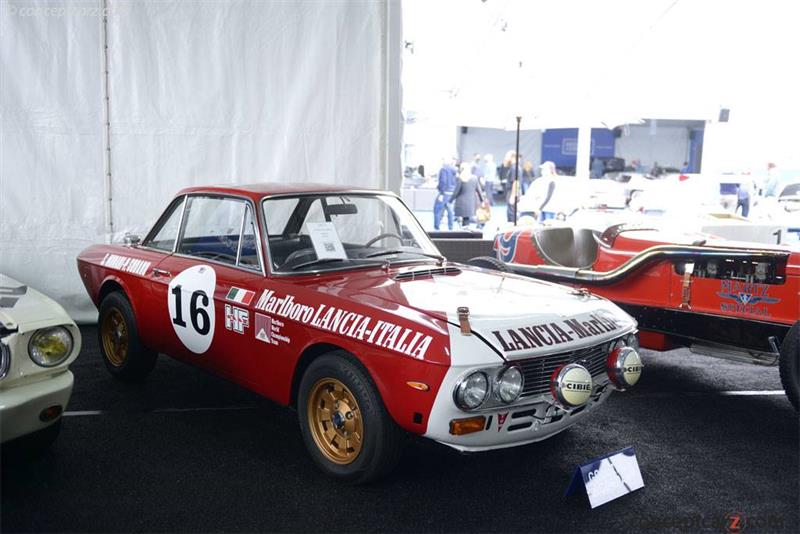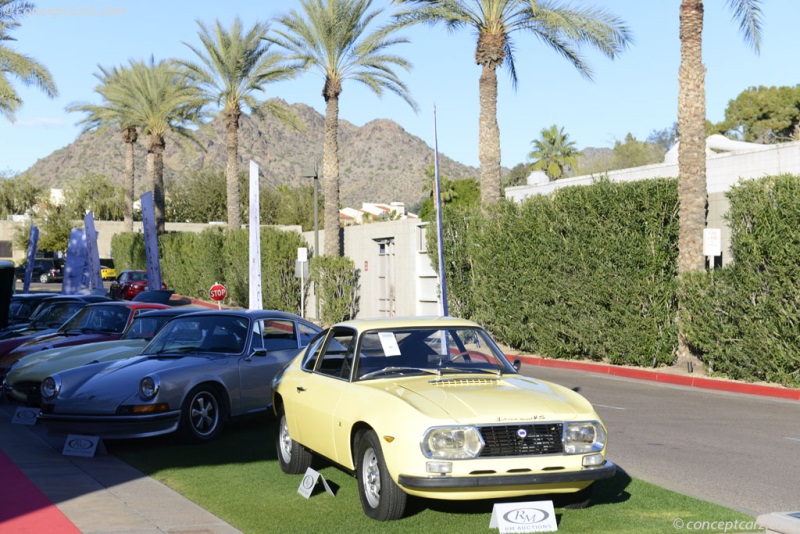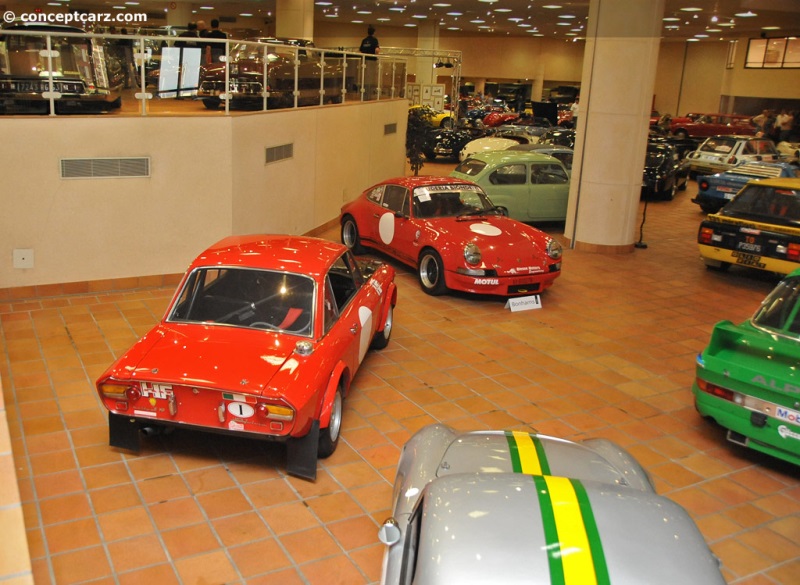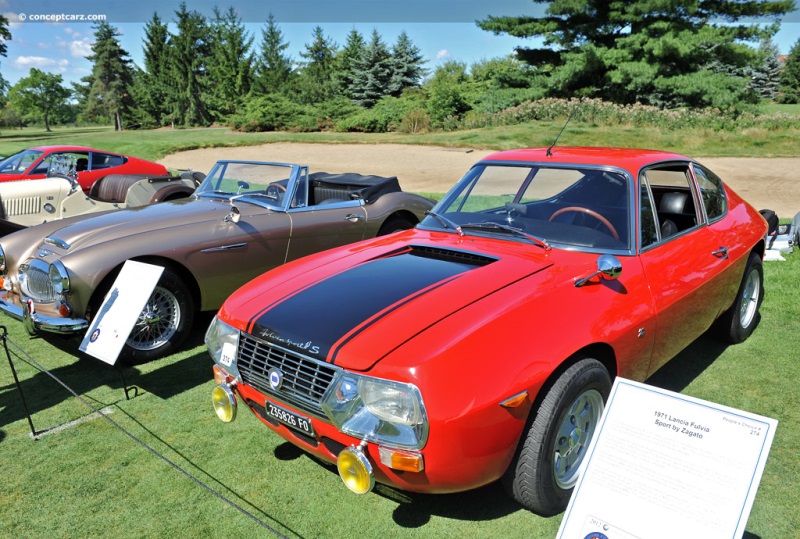Lancia's automobiles were renowned for innovation, sophistication, and non-traditional styling and mechanical elements. The boxy-styled Appia replacement continued to rely on ingenuity and creative thinking, featuring an all-new, narrow-angle, overhead-camshaft V4 engine, front-wheel drive, disc brakes all round, and an independent front suspension by double wishbones. It was introduced in 1963 at the Geneva Motor Show and was named the Fulvia after Via Fulvia, the Roman road leading from Tortona to Turin. Produced through 1976, body styles included a Berlina four-door saloon, 2-door Coupe, and Sport (designed and built by Zagato on the Coupe floorpan).
SedanThe Fulvia was the last Lancia model designed by the company's engineers prior to the Fiat takeover in 1969. The Fulvia had outstanding power-to-weight, braking, handling, and was very successful in European rallies and hill climbs by the late 1960s. The Fulvia's predecessor, the Appia, was powered by a V4 engine sending power the rear wheels and remained in production from 1953 through 1963. The Fulvia that followed shared more with the Flavia rather than its predecessor, with front-wheel drive and similar engineering design. The Fulvia Berlina used an independent suspension in the front with a single leaf spring, while the rear used a beam axle with leaf springs and a Panhard rod. Dunlop disc brakes at all four corners provided the stopping power, while Second Series examples (introduced in 1970) received larger Girling calipers and a brake servo. While the Flavia had used a horizontally opposed four-cylinder engine, the Fulvia received a 'Narrow Angle' vee configuration unit with a similar configuration that had blanketed Lancia's legacy since the Lambda of the 1920s. The longitudinal engine was mounted in front of its transaxle and was paired with a four-speed (later five-speed) transmission. The DOHC V4 was designed by Zaccone Mina and given a narrow 12-degree V angle which allowed a single cylinder head to cover all the cylinders. It had a single carburetor, a 72mm bore, and a stroke of 67mm, resulting in a displacement size of 1091cc and an output of 58 CV (57 horsepower). For those seeking more power, Lancia soon offered an uprated version that used twin Solex carburetors and a higher compression ratio of 9.0:1 which boosted output to 71 CV (70 HP). Even more tunning brought output to 80 to 88 CV. Three displacement sizes were offered, including a 1199cc, 1231cc, and 1298cc. For the new 1.6 HF, the engine was completely reworked with an even narrower angle and longer 75 mm stroke, a bore of 82 mm, and a displacement of 1584cc. Output ranged from 115 to 132 CV (113 to 130 hp). Lancia's works team campaigned the Fulvia in 1.2- and 1.3-liter forms, securing a handful of wins at the World Championship level, before the advent of the 1.6-litre, five-speed HF1600 for 1969 gave them the means to mount a more serious challenge. The ultimate expression of the Fulvia Coupe was the HF 1600 variant which used a 1,584cc engine with 115 horsepower in road trim with up to 165 available in rally tune. The Series 1 Berlina
The Berlina four-door saloon was introduced in 1963 and powered by a single twin-choke carbureted version of the 1091cc engine offering 58 horsepower at 5800 RPM. In 1964, the Berlina 2C arrived and would remain in production through 1969. The engine was given double twin-choke Solex carburetors, and the body shell was given revised front subframe mountings. An enameled '2C' badge was placed on the radiator grille, 'Fulvia 2C' script at the rear, and 155R14 Michelin X Radial tires.
Sports Coupe by Zagato
View info and historyThe Berlina GT was introduced at the Geneva Salon in 1967, and the Berlina GTE arrived in 1968. The GT came with the 1216cc engine (later enlarged to 1231cc) from the Coupe, rode on 155R15 Michelin X tires, and wore an enameled 'GT' badge on the radiator grille and 'Fulvia GT' script at the rear. The Berlina GTE of 1968 and 1969 rode on 155 SR 14 Michelin X radial tires and had a 1298cc engine from the Coupe Rallye 1.3, with an output of 87 bhp. The Series 2 BerlinaThe Series II Berlina was distinguished by its updated interior, an altered roofline, and a slightly longer (by 0.8 inches) wheelbase. Power was from the 1,298cc engine. A five-speed gearbox was introduced in 1970. The Lancia Fulvia Coupe
Styled in-house by Piero Castagnero, a 2+2 coupé on a shorter wheelbase (5.9 inches shorter) was launched in 1965. Its mechanical specifications were similar to the Berlina, but the newcomer had all the visual presence its progenitor lacked and came with a 1,216cc engine producing 80bhp. The Coupe was replaced in 1977 by the Beta Coupe powered by a 1.3-liter engine.
Sports Coupe by Zagato
View info and historyA competition version of the coupe, known as the Coupe HF, was introduced in 1965 and powered by a 1,216cc engine offering 87 horsepower. Its athletic stance was complimented by lightweight materials, including the use of aluminum for its doors, boot lid, and boot. The bumpers were removed, bare steel wheels without hubcaps were placed at all four corners, and Plexiglass for the side and rear windows. The Rallye 1.3 HF was built from 1967 through 1969 and had a new 1,298cc engine with 100 horsepower at 6,400 RPM. The Rallye 1.3 had a 1,298cc engine with 86 horsepower and the Rallye 1.3 S (Sport) had a more powerful 1,298cc engine with 91 horsepower. The interior compartment had a wood-grain dash, supportive bucket seats, a console-mounted shift lever, and useful instrumentation. The Works rally-spec model was the Rallye 1.6 HF powered by a 130 horsepower (or more depending on tune) 1,584cc engine. The Works Rally team raced this version through 1974 before replacing it with the Stratos HF. The HF1600 secured seven European Championship wins in 1970, six in 1971 and seven the following year to take the World Rally Championship for Makes in 1972. Alpine-Renault's A110 captured the title in 1973 but the HF1600 helped Lancia to a second Mackes championship in 1974 together with the Stratos and Beta Coupé, while Harry Kallstrom (1969) and Sandro Munari (1972) became European Rally Champions driving the HF1600.
Sports Coupe by Zagato
View info and historyThe Fulvia HF1600 helped secure the company's reputation on the World Rallying stage and established a tradition that continued with the Stratos, Rally 037, and Delta Integrale models. When production ceased in 1973, a total of 3,690 Stradale (road-going) HF1600s had been produced, with a further 1,258 being built to 'Rallye' specification.The Sport by Zagato
Ugo Zagato founded Carrozzeria Zagato in Milan in 1920, and their earliest work was for Fiat. By the 1950s, their list of clients included Alfa Romeo and Lancia. Zagato coachwork was applied to the Appia, Appia GTE, Aurelia 2500, and Flaminia Sport, and by the 1970s, the Lancia Fulvia Sport and Beta Spider had become a mainstay of Zagato's business. The Fulvia Sport was a two-seater with an aerodynamic fastback design, an all-aluminum alloy bodyshell, and based on the Coupe mechanical components. The bonnet was hinged to the right-hand side and a rear hatch could be lifted electrically to provide cabin ventilation. Access to the spare wheel was another unusual feature with access to the separate compartment via a rotating panel that held the rear license (Number) plate.
Sports Coupe by Zagato
Chassis #: 2268
View info and history
Auction entries : 2Power was from a 1,216cc engine from 1965 to 1967, growing to 1,298cc (Sport 1.3) in 1966 and continuing through 1969. Whereas the first Sport was homologated as a two-seater, the Sport 1.3 was a three-seater (or 2+1). The Sport 1.3 S was equipped with a 1,298cc engine and delivered 92 horsepower. The Series II Sport by Zagato
The second series Fulvia Sport arrived in 1970 following an introduction at the Turin Motor Show. Among the upgrades included a five-speed gearbox, taller ride height, wider tires, taller final drive, an alternator (instead of the dynamo), and revised suspension geometry. A traditional front hinging was now used for the bonnet, and the unusual spare wheel compartment was removed.
by Daniel Vaughan | Jan 2022

Sedan
The Berlina four-door saloon was introduced in 1963 and powered by a single twin-choke carbureted version of the 1091cc engine offering 58 horsepower at 5800 RPM. In 1964, the Berlina 2C arrived and would remain in production through 1969. The engine was given double twin-choke Solex carburetors, and the body shell was given revised front subframe mountings. An enameled '2C' badge was placed on the radiator grille, 'Fulvia 2C' script at the rear, and 155R14 Michelin X Radial tires.
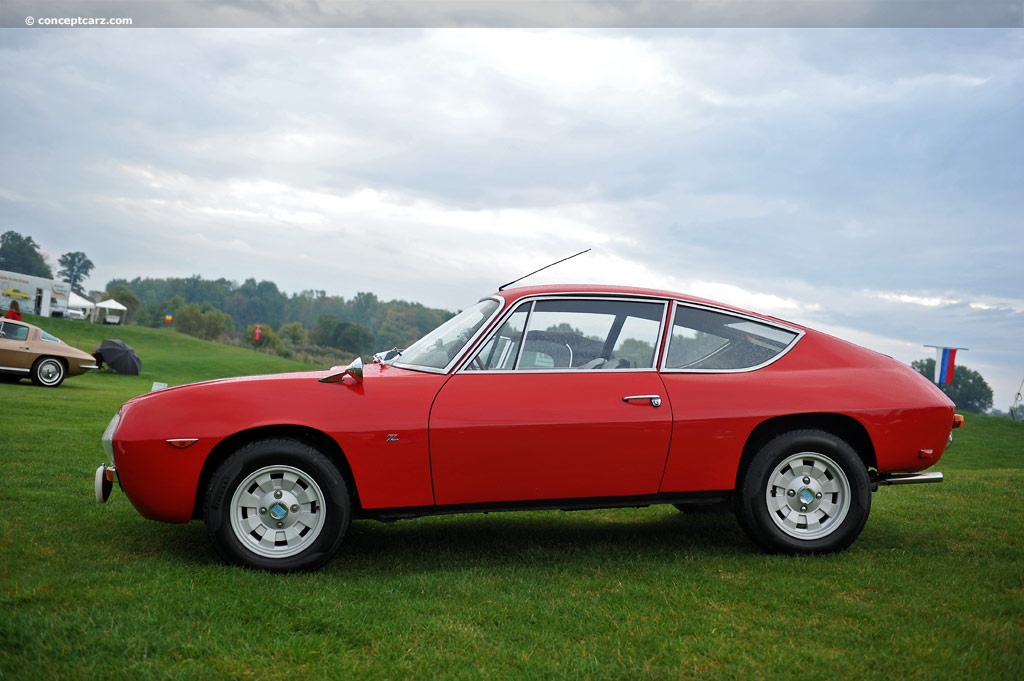
Sports Coupe by Zagato
View info and history
Styled in-house by Piero Castagnero, a 2+2 coupé on a shorter wheelbase (5.9 inches shorter) was launched in 1965. Its mechanical specifications were similar to the Berlina, but the newcomer had all the visual presence its progenitor lacked and came with a 1,216cc engine producing 80bhp. The Coupe was replaced in 1977 by the Beta Coupe powered by a 1.3-liter engine.
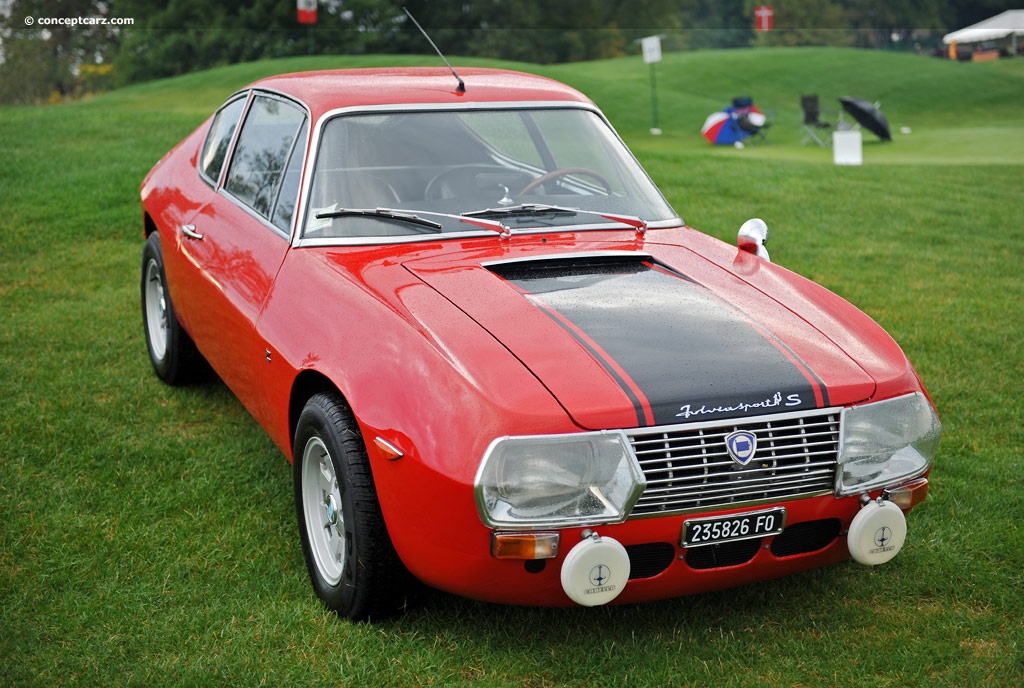
Sports Coupe by Zagato
View info and history
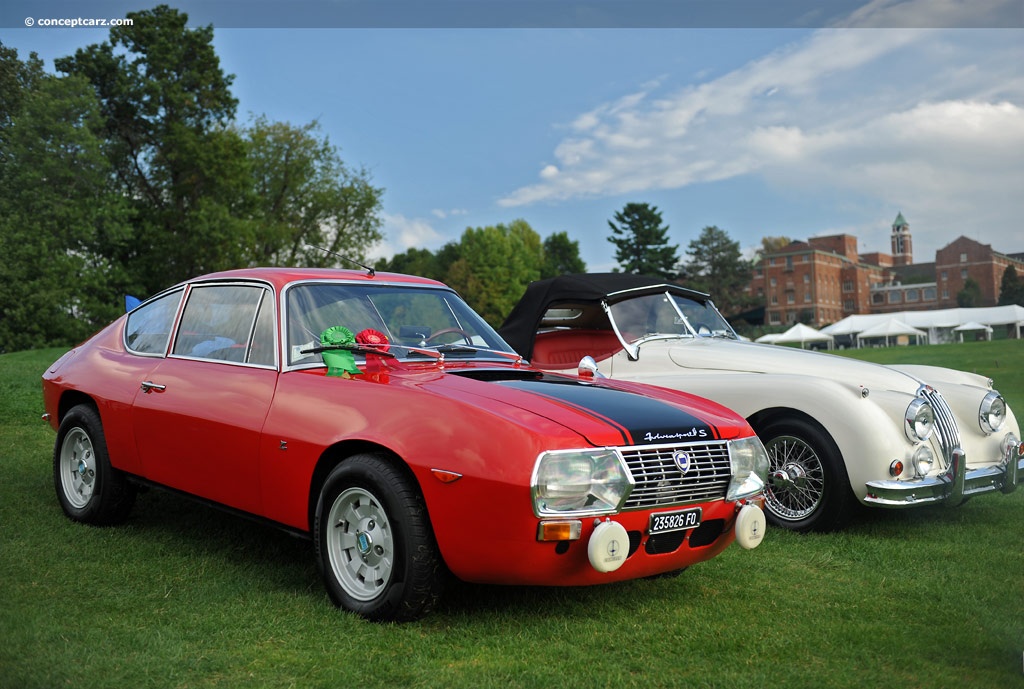
Sports Coupe by Zagato
View info and history
Ugo Zagato founded Carrozzeria Zagato in Milan in 1920, and their earliest work was for Fiat. By the 1950s, their list of clients included Alfa Romeo and Lancia. Zagato coachwork was applied to the Appia, Appia GTE, Aurelia 2500, and Flaminia Sport, and by the 1970s, the Lancia Fulvia Sport and Beta Spider had become a mainstay of Zagato's business. The Fulvia Sport was a two-seater with an aerodynamic fastback design, an all-aluminum alloy bodyshell, and based on the Coupe mechanical components. The bonnet was hinged to the right-hand side and a rear hatch could be lifted electrically to provide cabin ventilation. Access to the spare wheel was another unusual feature with access to the separate compartment via a rotating panel that held the rear license (Number) plate.
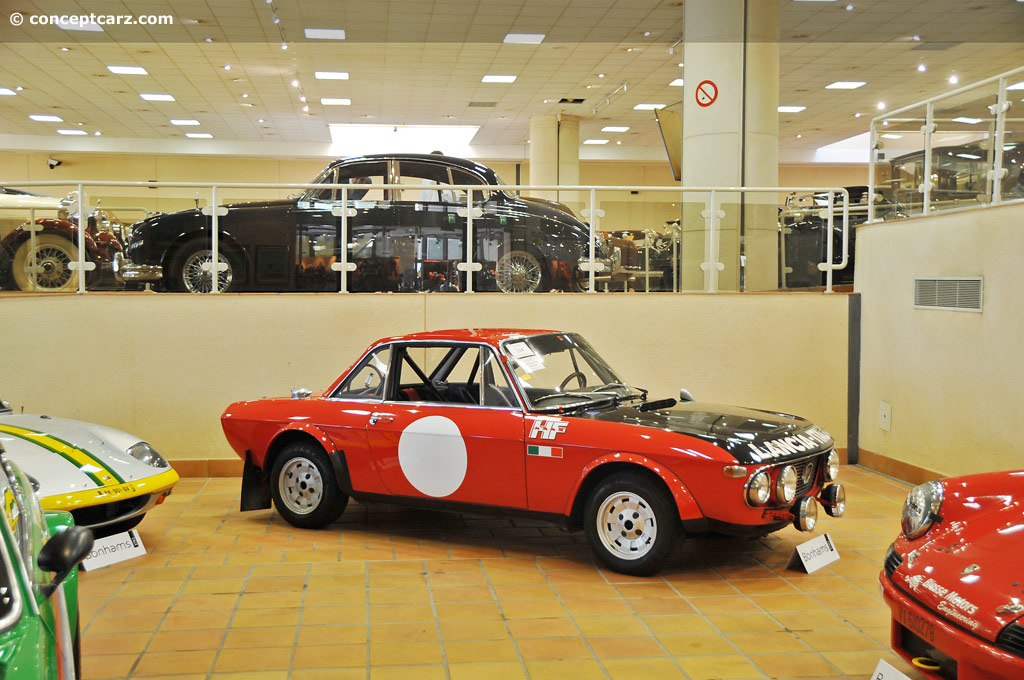
Sports Coupe by Zagato
Chassis #: 2268
View info and history
Auction entries : 2
The second series Fulvia Sport arrived in 1970 following an introduction at the Turin Motor Show. Among the upgrades included a five-speed gearbox, taller ride height, wider tires, taller final drive, an alternator (instead of the dynamo), and revised suspension geometry. A traditional front hinging was now used for the bonnet, and the unusual spare wheel compartment was removed.
by Daniel Vaughan | Jan 2022
Related Reading : Lancia Fulvia History
In 1963 Lancia introduced the Fulvia at the Geneva Motor Show. It was designed by Antonio Fessia and intended as a replacement for the Lancia Appia. The Fulvia was a front-wheel-drive vehicle, whereas its predecessor, the Appia, used a rear-wheel-drive configuration. The longitudinal engine was mounted in the front. The suspension in the rear was a solid axle with a Panhard rod and leaf springs, while....
Continue Reading >>
Continue Reading >>
Related Reading : Lancia Fulvia History
Many carmakers stand out in the collective memory of vintage auto enthusiasts as having built exceptionally well-engineered cars. Porsche and Lotus, for instance, each built cars not just with passion but also with mathematical precision and distinct purpose. One of the best-engineered marques of automotive history has often been forgotten, though. It was the carmaker that made pioneering advances....
Continue Reading >>
Continue Reading >>
Similarly Sized Vehicles
from 1971
Similarly Priced Vehicles
Pontiac Firebird ($3,047-$4,595)
Chevrolet Chevelle ($2,675-$3,650)
Buick Gran Sport ($3,285-$3,476)
Pontiac GTO ($3,450-$4,070)
AMC Javelin ($2,890-$3,430)
Plymouth Fury ($3,110-$4,145)
Volkswagen Transporter ($2,720-$3,440)
Oldsmobile Cutlass ($2,900-$3,450)
Ford Custom Series ($3,290-$3,980)
Average Auction Sale: $26,425
Chevrolet Chevelle ($2,675-$3,650)
Buick Gran Sport ($3,285-$3,476)
Pontiac GTO ($3,450-$4,070)
AMC Javelin ($2,890-$3,430)
Plymouth Fury ($3,110-$4,145)
Volkswagen Transporter ($2,720-$3,440)
Oldsmobile Cutlass ($2,900-$3,450)
Ford Custom Series ($3,290-$3,980)
Average Auction Sale: $26,425
1971 Lancia Fulvia Vehicle Profiles
Recent Vehicle Additions
Performance and Specification Comparison
Price Comparison
$3,685 - $5,030
Fulvia Specification Comparison by Year
Year
Production
Wheelbase
Engine
Prices
91.00 in., 91.70 in., 98.00 in.
4 cyl., 66.58 CID., 71.00hp
4 cyl., 79.21 CID., 101.00hp
4 cyl., 79.21 CID., 115.00hp
4 cyl., 79.21 CID., 101.00hp
4 cyl., 79.21 CID., 115.00hp
$2,725 - $3,450
91.70 in.
4 cyl., 66.58 CID., 71.00hp
4 cyl., 79.21 CID., 101.00hp
4 cyl., 79.21 CID., 115.00hp
4 cyl., 96.66 CID., 130.00hp
4 cyl., 79.21 CID., 101.00hp
4 cyl., 79.21 CID., 115.00hp
4 cyl., 96.66 CID., 130.00hp
$2,950 - $4,735
91.70 in., 98.50 in.
4 cyl., 79.21 CID., 101.00hp
4 cyl., 79.21 CID., 115.00hp
4 cyl., 96.66 CID., 130.00hp
4 cyl., 79.21 CID., 115.00hp
4 cyl., 96.66 CID., 130.00hp
$2,950 - $4,735
91.70 in., 98.50 in.
4 cyl., 79.00 CID., 95.00hp
4 cyl., 97.00 CID., 130.00hp
4 cyl., 97.00 CID., 130.00hp
$3,440 - $3,440
91.70 in., 98.50 in.
4 cyl., 79.21 CID., 101.00hp
4 cyl., 79.21 CID., 115.00hp
4 cyl., 97.00 CID., 130.00hp
4 cyl., 79.21 CID., 115.00hp
4 cyl., 97.00 CID., 130.00hp
$2,955 - $4,740
91.70 in.
4 cyl., 79.21 CID., 101.00hp
4 cyl., 79.21 CID., 115.00hp
4 cyl., 97.00 CID., 130.00hp
4 cyl., 79.21 CID., 115.00hp
4 cyl., 97.00 CID., 130.00hp
Related Automotive News

Alpine Passion Through The Years At Retromobile
Retromobile set to play host to six classic Alpine models
The Alpine Vision show car will also be on display as a symbolic bridge between the brands past and future
Groupe Renault is pleased to confirm Alpines participation in the 42nd Retromobi...

ALPINE – THE EXCITEMENT BUILDS AT THE 2016 GOODWOOD FESTIVAL OF SPEED
Two show cars previewing the all-new Alpine sports car due to be unveiled at the end of this year
Strong Alpine presence at the exclusive Cartier Style %26 Luxe display
Three Alpines running up the hill, including the Alpine A460 competition car tha...

2015 Pebble Beach Concours d'Elegance Best of Show
PEBBLE BEACH, Calif. (August 17, 2015) -- An Italian Isotta Fraschini Tipo 8A Cabriolet that once turned heads and garnered top prizes in the classic era glided to victory at the 65th Pebble Beach Concours dElegance on Sunday.
The competition...

Fiat Chrysler Automobiles key player in the Classic Days in Germany
Concours delegance, parades and special races on roads closed to traffic this is the packed programme reserved for the historic cars arriving at the medieval Dyck castle
Alfa Romeo takes part with four precious models the prototype 750 Competizi...

TAG HEUER & McLAREN: A BIGGER & STRONGER PARTNERSHIP
During the Geneva Motor Show, Jean-Christophe Babin, TAG Heuers President %26 CEO, and Ron Dennis, Executive Chairman of the McLaren Group, announced a new exclusive partnership agreement.
TAG Heuer will continue to supply the official timepiece for...





















